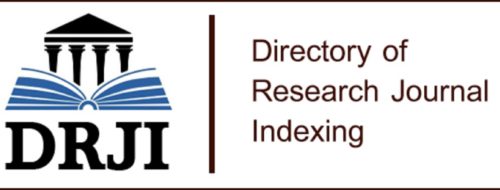TECHNICAL DIAGNOSIS AND RESTORATION PLAN FOR DETERIORATED SANITARY INFRASTRUCTURE: A CASE STUDY IN MANTA, ECUADOR
Keywords:
Sanitary sewer, wastewater, operational diagnosis, corrective maintenance, urban infrastructureAbstract
DOI: https://doi.org/10.46296/ig.v8i15.0246
This study evaluated the operational status of the sanitary sewage system in the Si Vivienda urbanization of Manta, Ecuador, identifying critical deficiencies and proposing technical solutions to optimize its operation. Through applied and descriptive research, the structural conditions of household inspection boxes, manholes, and sanitary infrastructure components were examined in detail, using field methods, direct observation, and documentary analysis. The infrastructure was found to have a medium level of deterioration, with significant obstructions and structural damage, resulting in poor system operation. Critical points where wastewater flow is compromised were identified, and technical parameters such as flow rates were recalculated. These results were complemented with resident surveys to assess the impact on their quality of life. A technical plan was developed that includes the design of new functional covers and restoration of wells with high-durability materials, along with a reference budget for implementation and recommendations for preventive and corrective maintenance. The study adheres to national and international regulations such as EMAAP-Q and Interagua, expressing the urgent need for intervention in the urbanization's sanitary system.
Keywords: Sanitary sewer, wastewater, operational diagnosis, corrective maintenance, urban infrastructure.
References
Álvarez-Álvarez, M. J., Sornoza-Parrales, D. R., Pincay-Pilay, M. M., & Loor-Sierra, D. E. (2024). Caudal ecológico para restauración del ecosistema en la cuenca del río Rímac. MQRInvestigar, 8(4), 5788–5822. https://doi.org/10.56048/MQR20225.8.4.2024.5788-5822
Burton, F. L. (2003). Wastewater engineering: treatment and reuse (4th ed.). Metcalf & Eddy, Inc. New York: McGraw-Hill.
Carvajal Rivadeneira, D. D., Ponce Reyes, F. S., Sornoza Parrales, D., Pincay Pilay, M., Antonio, Q. S., & Miller Zavala, J. H. (2023). Elementos básicos de la investigación científica: ISBN: 978-9942-846-51-8. EDITORIAL INTERNACIONAL RUNAIKI, 1-75. Recuperado a partir de https://runaiki.es/index.php/runaiki/article/view/83
CPE INEN 5. (2019). Normas para estudio y diseño de sistema de agua potable y disposición de aguas residuales para poblaciones mayores a 1000 habitantes. Quito.
EMAAP-Q. (2022). Normas de diseño de sistema de alcantarillado para la EMAAP-Q (Primera ed.). Quito, Ecuador: EMAAP.
Falco, A., & Herrera, P. (2005). Técnicas de recolección de datos. Recuperado de http://tesisdeinvestig.blogspot.com/2011/06/tecnicas-e-instrumentos-de-recoleccion.html
Granada Energía. (2022). Manual técnico de instalaciones sanitarias residenciales. Granada, España.
González, J., & Velasco, B. (2022, 23 de enero). Cantones en Ecuador presentan deficiencias en alcantarillado. El Comercio. https://www.elcomercio.com/actualidad/ecuador/cantones-ecuador-alcantarillado-servicio-deficiencia.html
Hernández, R., Fernández, C., & Baptista, P. (2014). Metodología de la investigación (Vol. 6, pp. 102-256). México.: México: McGraw-Hill.
Huber, A. W. (2018). Water distribution and wastewater collection design methods. Journal of Environmental Engineering, 144(5), 04018025.
Instituto Nacional de Estadística y Censos [INEC]. (2023). Indicadores de agua, saneamiento e higiene. Quito: INEC.
Interagua. (2021). Manual de diseño de redes de alcantarillado - MA-OED-003; V-002. Guayaquil.
IPCC. (2019). Climate Change and Land: an IPCC special report on climate change, desertification, land degradation, sustainable land management, food security, and greenhouse gas fluxes in terrestrial ecosystems. Intergovernmental Panel on Climate Change.
Martín, I. (2019). Tratamiento de aguas residuales industriales. Madrid: Editorial Técnica.
Normas INEN. (2018). Normas para estudio y diseño de sistemas de agua potable y disposición de aguas residuales (Primera ed.). Quito, Ecuador.
Organización de las Naciones Unidas [ONU]. (2021). Las aguas residuales - El recurso desaprovechado. UNESCO.
Pacheco, G. (2023). Ampliación del sistema de alcantarillado sanitario en la cooperativa Ganaderos Orenses perteneciente al Cantón San Miguel de los Bancos. Jipijapa: UNESUM.
Pincay Pilay, M. M., Álvarez Álvarez, M. J., Vera Pisco, D. G., & Sornoza Parrales, D. R. (2025). Pantanos secos artificiales para tratamiento de aguas residuales: Una revisión sistemática de literatura. RECIMUNDO, 9(1), 485–496. https://doi.org/10.26820/recimundo/9.(1).enero.2025.485-496
Pita, S. (2002). Investigación cualitativa y cuantitativa. Investigación: Metodología y Estadística, 76-78.
Pozo, V. (2021). Anuario estadístico de agua potable y saneamiento. Instituto Nacional de Estadística y Censos (INEC), Quito, Ecuador.
Quimiz, A., Mero, A., & González, M. (2023). Fundamentals of Fluid Mechanics for Engineers: A Practical Approach. Editorial Académica Española.
Ruiz, M. (2022). Diagnóstico y evaluación del sistema de alcantarillado sanitario en la inspección de San Javier en el municipio de la Mesa (Tesis de pregrado). Universidad Santo Tomás, Pasto, Colombia.
SENAGUA. (2021). Norma para estudio y diseño de sistemas de agua potable y disposición de aguas residuales para poblaciones mayores a 1000 habitantes.
Seoánez, C. M. (2019). Depuración de las aguas residuales por tecnologías ecológicas y de bajo costo. Madrid, España: Grupo Editorial Mundi-Prensa.
Steffler, P. (2021). Hydraulic design of sewerage systems. Journal of Hydraulic Engineering, 147(8), 05021007.
Tapia, B. (2021). Diseño de la red de alcantarillado de aguas servidas del sector Alberto Maldonado en ciudad Durán (Tesis de pregrado). Universidad de Guayaquil, Ecuador.
Published
How to Cite
Issue
Section
License
Copyright (c) 2025 Scientific Journal INGENIAR: Engineering, Technology and Research

This work is licensed under a Creative Commons Attribution-NonCommercial-ShareAlike 4.0 International License.

















